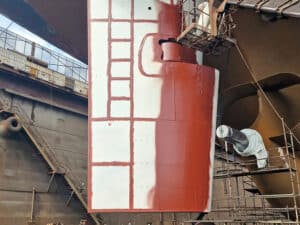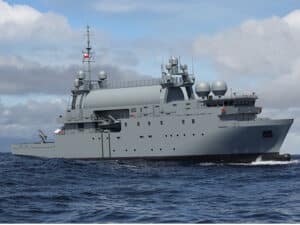
Coast Guard releases final report on Alaska Ranger sinking
Written by Failure of the vessel’s Kort nozzle struts may have led to the March 23, 2008, sinking of the fish-processing vessel Alaska Ranger and the subsequent loss of five of the 47 people aboard the ship. The Coast Guard today released its final report of the investigation into the loss of the vessel.
Failure of the vessel’s Kort nozzle struts may have led to the March 23, 2008, sinking of the fish-processing vessel Alaska Ranger and the subsequent loss of five of the 47 people aboard the ship. The Coast Guard today released its final report of the investigation into the loss of the vessel.
The Coast Guard Marine Board of Investigation determined that the cause of the sinking was flooding that likely started in the rudder room, but rapidly progressed to the engine room and other spaces due to a lack of watertight integrity.
While the exact source of the uncontrolled flooding remains unknown, a thorough analysis of the facts indicates the most likely source was related to the vessel’s poor material condition and may have been related to the Kort nozzle struts. The struts support the nozzles shrouding the propellers at the stern of the vessel and are believed to have experienced excessive stresses where they were attached to the vessel’s hull.
The Board concluded that the Fishing Company of Alaska failed to properly maintain the structural condition of the Alaska Ranger. Evidence of extensive and repeated fracturing of the nozzle struts and structural failures in the aft ballast tanks and potable water tanks went unaddressed.
The Alaska Ranger sank approximately 130 miles west of Dutch Harbor, Alaska. Of the 47 people aboard, 42 were rescued, four deceased crew members were recovered and one remains missing and is presumed dead. The Coast Guard rescued 20 of the Alaska Ranger’s crew through multiple hoists conducted by HH-60 and HH-65 helicopters, with survivors being transported to and cared for aboard the Coast Guard Cutter Munro. The fishing vessel Alaska Warrior rescued 22 survivors from two liferafts and recovered three deceased crew members from the frigid water. The fourth deceased crew member was recovered by the Coast Guard.
The Alaska Ranger was a 189-foot, 1,577 gross ton, fish-processing vessel in the Bering Sea/Aleutian Island federal groundfish trawl fisheries. The vessel was owned by the Fishing Company of Alaska.
The report of investigation details the findings of the Coast Guard’s marine board of investigation as well as recommendations for enhancing safety for fishing vessels.
Based on its findings, the Board made 37 recommendations that address the lack of comprehensive safety regulations for fishing vessels, facilitate the consistent application of existing regulations and correct shortcomings in the ACSA program that existed at the time of the casualty.
Recommendations were also made to ensure crew members have properly sized immersion suits, and to clarify and enforce requirements for licensed crew members.
The Coast Guard’s 2010 Authorization Act, signed in October 2010, set new requirements for commercial fishing vessels that, when implemented, are expected to enhance crew and vessel safety. Included in the Act are provisions for mandatory safety examinations for vessels operating beyond three miles at sea, as well as construction standards for new vessels greater than 50 feet in length. Additional standards will also be imposed for vessels greater than 79 feet in length.
According to the National Institute for Occupational Safety and Health, from 1994 to 2004, 641 commercial fishermen died while fishing in the United States. Vessel sinkings resulted in more than half of all fatalities. While work-related fatalities for commercial fishermen in Alaska are still very high, they have decreased by 42 percent since the early 1990s. This success is due in part to the Coast Guard implementing new safety requirements in the early 1990s.
The Report of Investigation may be downloaded from the U.S. Coast Guard’s Office of Investigations and Analysis Web site at http://marineinvestigations.us
January 12, 2011





Leave a Reply
You must be logged in to post a comment.